
USS Luzerne County (LST-902) was an LST-542-class tank landing ship built for the United States Navy during World War II. Named after Luzerne County, Pennsylvania, she was the only U.S. Naval vessel to bear the name.

USS Admiral W. S. Sims (AP-127) was a transport in the United States Navy. She was later renamed USNS General William O. Darby (T-AP-127). Later her name was struck and she was known simply by her hull number. In 1981, she was reclassified as IX-510.

USS Admiral W. L. Capps (AP-121), an Admiral W. S. Benson-class transport, was the second ship of the United States Navy to be named for Rear Admiral Washington L. Capps (1864–1935). Unusually, the first — USS Capps (DD-550) — served concurrently with the Admiral W. L. Capps. Via a transfer to the United States Army and then back to the Navy, the ship was renamed USNS General Hugh J. Gaffey (T-AP-121), making her the only ship to be named for Hugh Joseph Gaffey.

USS Admiral Hugh Rodman (AP-126) was an Admiral W. S. Benson-class transport: Laid down, 24 April 1944, as a Maritime Commission type (P2-SE2-R1) hull, under Maritime Commission contract,, at Bethlehem Shipbuilding Corporation, Alameda, California; launched on 25 February 1945; commissioned as the USS Admiral Hugh Rodman (AP-126), 7 July 1945, decommissioned on 14 May 1946, at New York; transferred to the U.S. Army Transportation Service in May 1946; commissioned USAT General Maurice Rose on 1 August 1946; reacquired by the U.S. Navy and assigned to the Military Sea Transport Service (MSTS); placed in service as USNS General Maurice Rose (T-AP-126) on 1 March 1950.

USS General George M. Randall (AP-115) was a General John Pope class troop transport which served with the United States Navy in World War II and the postwar era. She was named after Major General George Morton Randall, an American Civil War hero, and veteran of the Indian wars of the 1880s and the Philippines in the early 1900s.
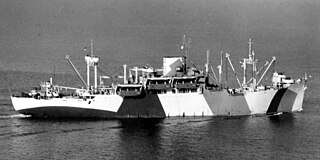
USS Thomas Jefferson (APA-30), serving from 1 May 1942 until 18 July 1955, was a transport and then reclassified on 1 February 1943 as a President Jackson-class attack transport. She was laid down under Maritime Commission contract as President Garfield on 5 February 1940 at Newport News, Virginia, by the Newport News Shipbuilding & Drydock Company for the American President Lines. The ship was launched on 20 November 1940, sponsored by Miss Eugenia Merrill. President Garfield was completed 26 March 1941 and acquired by the War Shipping Administration (WSA) 29 November 1941 with American President Lines, the WSA agent, operating the ship as a troop transport. On 1 May 1942 the United States Navy purchased the ship and commissioned her USS Thomas Jefferson, named for Founding Father Thomas Jefferson, on 31 August 1942.

USS Genesee (AOG-8) was a Patapsco-class gasoline tanker acquired by the U.S. Navy for the dangerous task of transporting gasoline to warships in the fleet, and to remote Navy stations.

USS Hampton (APA-115) was a Bayfield-class attack transport that served with the United States Navy from 1945 to 1946. She was old into commercial service in 1947 and was scrapped in 1973.

USS Henrico (APA-45) was a Bayfield-class attack transport that served with the United States Navy in World War II, and subsequently in the Korean War, Cold War and Vietnam War.

USS General LeRoy Eltinge (AP-154) was a General G. O. Squier-class transport ship for the US Navy in World War II. She was named in honor of US Army general LeRoy Eltinge. She was transferred to the US Army as USAT General LeRoy Eltinge in 1946. On 20 July 1950 she was transferred to the Military Sea Transportation Service (MSTS) as USNS General LeRoy Eltinge (T-AP-154). She was later sold for commercial use and operated under the names SS Robert E. Lee and SS Robert Toombs, before being scrapped in 1980.

USS General W. M. Black (AP-135) was a General G. O. Squier-class transport ship for the U.S. Navy in World War II. The ship was crewed by the U.S. Coast Guard until decommissioning. She was named in honor of U.S. Army general William Murray Black. She was transferred to the U.S. Army as USAT General W. M. Black in 1946. On 1 March 1950 she was transferred to the Military Sea Transportation Service (MSTS) as USNS General W. M. Black (T-AP-135). She was later sold for commercial operation under the name SS Green Forest, before being scrapped in 1980.
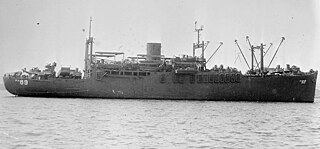
USS Frederick Funston (APA-89) was a Frederick Funston-class attack transport that served with the US Navy during World War II. Before serving as a Navy APA, she had been the US Army transport USAT Frederick Funston. After World War II, she was returned to the Army and operated as USAT Frederick Funston. Funston was among the seventy-two ships transferred to the Navy's Military Sea Transportation Service (MSTS) in the 1 March 1950 group and placed in service as USNS Frederick Funston (T-AP-178).

USS General John Pope (AP-110) was a troop transport that served with the United States Navy in World War II. After the war she was transferred to the Army and redesignated USAT General John Pope. She later served in the Korean and Vietnam Wars as a civilian-crewed Military Sea Transportation Service vessel, as USNS General John Pope (T-AP-110).

USS General H. W. Butner (AP-113), named for Henry W. Butner, was a troopship that served with the United States Navy in World War II and the Korean War. She was redesignated T-AP-113 in October 1949.
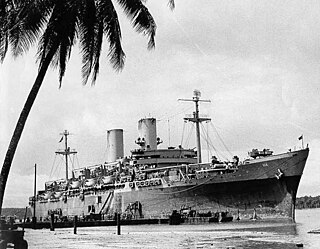
USS General William Mitchell (AP-114) was a troopship that served with the United States Navy in World War II, the Korean War and the Vietnam War.

USS General W. H. Gordon (AP-117) was a troop transport that served with the United States Navy in World War II. After the war, she was transferred to the US Army and served as USAT General W. H. Gordon. In the mid to late 1940s she sailed in trans-Pacific American President Lines passenger service with sister ship SS General Meigs. With the outbreak of the Korean War, she was reacquired by the Navy as a civilian-crewed Military Sea Transportation Service (MSTS) vessel, and redesignated USNS General W. H. Gordon (T-AP-117). She served again under the same designation in the Vietnam War.
SS Greenville Victory was a cargo Victory ship built in 1944, during World War II under the Emergency Shipbuilding program. The ship’s United States Maritime Commission designation was VC2-S-AP3, hull number 18 (V-18). Post-war she was acquired by the U.S. Army and renamed as USAT Greenville Victory. She was acquired by the U.S. Navy in 1950, renamed USNS Greenville Victory (T-AK-237) and assigned to the Military Sea Transportation Service (MSTS) who operated her safely through the Korean War and Vietnam War campaigns. She was the lead ship in her class of 9 ships that were transferred to the MSTS in 1950. She returned home with two battle stars to her credit and was struck in 1987.
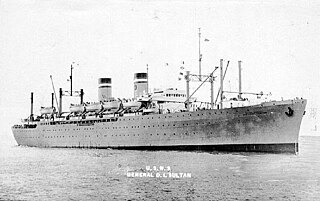
USS Admiral W. S. Benson (AP-120) began as an unnamed transport, AP-120, that was laid down on 10 December 1942 at Alameda, California by the Bethlehem-Alameda Shipbuilding Corp., under a Maritime Commission contract. She was named Admiral W. S. Benson (AP-120) on 20 October 1943 and launched on 22 November 1943; sponsored by Miss Dorothy Lucille Benson, granddaughter of the late Admiral William S. Benson. She was accepted from the Maritime Commission on 23 August 1944 and commissioned the same day.
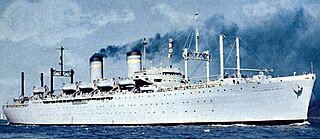
USS Admiral R. E. Coontz (AP-122) was an Admiral W. S. Benson-class transport built for the U.S. Navy during World War II. She was laid down under a Maritime Commission contract on 15 January 1943 at Alameda, California, by the Bethlehem Steel Corp., and launched on 22 April 1944. She was sponsored by Mrs. Edwin Kokko, daughter of Admiral Coontz, and commissioned on 21 November 1944.

USS Admiral E. W. Eberle (AP-123) was laid down on 15 February 1943 under a Maritime Commission contract by the Bethlehem Shipbuilding Corporation, Alameda, California; launched on 14 June 1944; sponsored by Mrs. Earl Warren, the wife of the Governor of California who later became Chief Justice of the United States Supreme Court; and acquired by the Navy and commissioned on 24 January 1945.



















